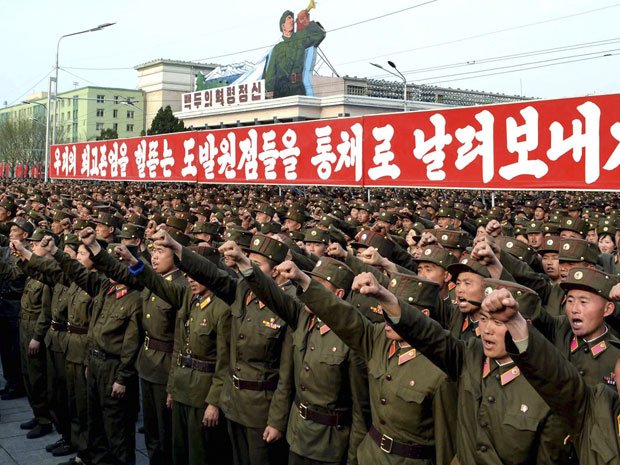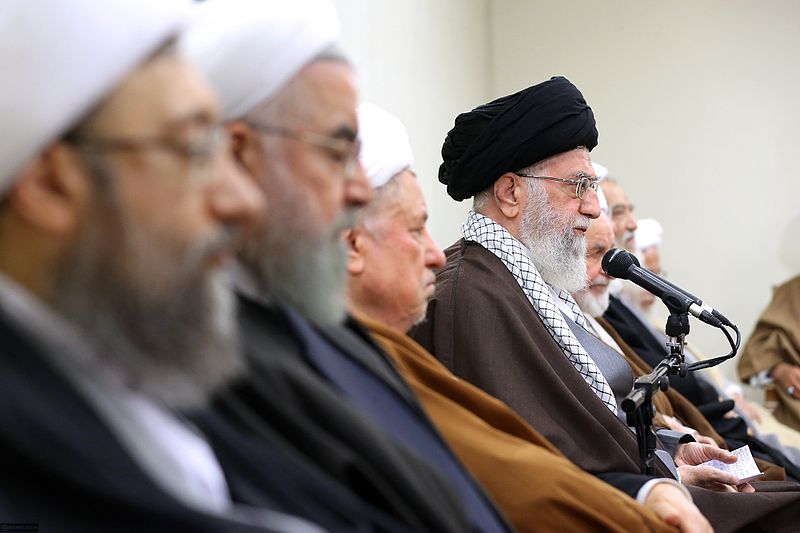In the face of the North Korean threat, experts have offered alarming analyses on the strength of the country’s military capabilities. According to the International Institute for Strategic Studies’ 2013 Military Balance, North Korea possesses an army of 1.19 million active personnel and 600,000 reservists. In comparison, South Korea possesses a much smaller force, totaling 655,000 (which are currently backed up by an American force of 28,000). With the existence of such a disparity, and with a substantial number of North Korean forces stationed along the demilitarized-zone, approximately 65 km away from the Southern Capital of Seoul, the North Korean threat is more menacing than one might think.
Although such a disparity exists in the strength of the two sides, a full-scale invasion of the South would not necessarily exhibit a successful outcome for Kim Jong-Un’s forces. Being deemed a failed state, with nuclear weapons no-less, details surrounding the training, morale and operational readiness remain sketchy at best. In addition, most of its equipment and ordinance is outdated and in poor shape.
[captionpix align=”left” theme=”elegant” width=”300″ imgsrc=”http://natoassociation.ca/wp-content/uploads/2013/03/korea-north_.jpg” captiontext=”According to the International Institute for Strategic Studies’ 2013 Military Balance, North Korea possesses an army of 1.19 million active personnel and 600,000 reservists”]
Not only does the North Korean army appear to be a stumbling colossus, but Southern capabilities have improved substantially over the past few years. On February 14th, during large military drills, South Korea disclosed the development of new cruise missile capable of hitting any target in the North. During a news briefing, South Korean Defense Ministry Spokesman Kim Min-seok, stated that “Our cruise missile shown today is a precision-guided weapon so accurate that it can be directed to smash through the window of a North Korean command post from anywhere on the Korean Peninsula.”
Not only has much investment been directed at military equipment, but the South’s Defense Ministry has also relaxed rules that required responses to North Korean provocations, wherever they occurred, to be sanctioned by its command centre. This gives Southern forces the ability to react more quickly to a North Korean attack.
Furthermore, recent threats from North Korea have strengthened America’s security guarantees to the South. On March 22, 2013, the United States and South Korea signed a contingency plan that would govern how the two allies would react to a North Korean provocation. Speaking on the agreement, General James D. Thurman, Commander of American forces in South Korea, and General Jung Seung-jo, Chairman of the Joint Chiefs of Staff of the South Korean military stated, “By completing this plan, we improved our combined readiness posture to allow us to immediately and decisively respond to any North Korean provocation.”
On March 15 as well, US Secretary of Defense Chuck Hagel announced a $1 billion plan to add 14 new missile interceptors to those already stationed in Alaska, increasing the US’s ability to shoot down incoming long-range missiles. In addition, the US has continued to conduct flights of its B-52 bombers, which are believed to be nuclear armed, over South Korea.
Although the North possesses the capabilities to inflict great damage on both South Korean and American forces, its ability to launch a full-scale invasion is likely quite limited. As North Korean threats have increased in intensity, they have only had the effect of strengthening American and South Korean military ties and capabilities.




